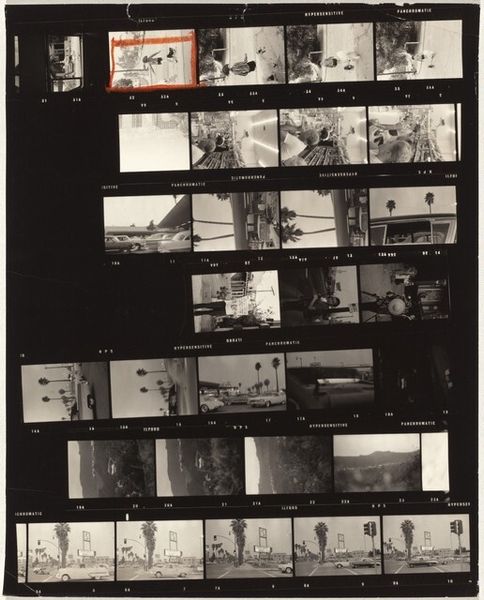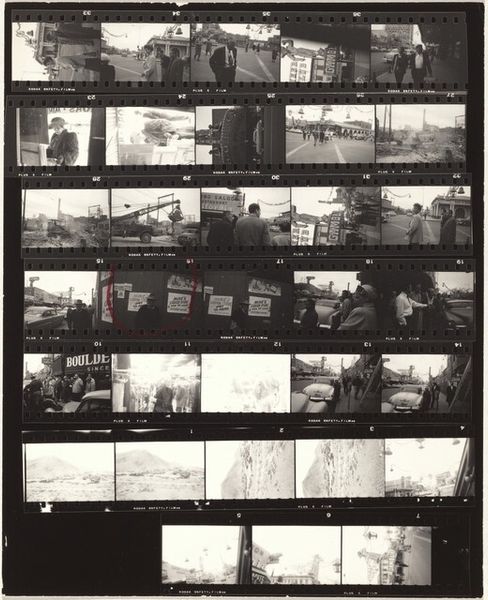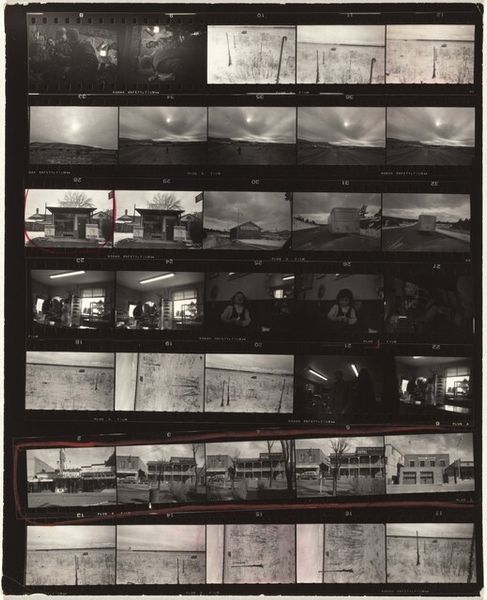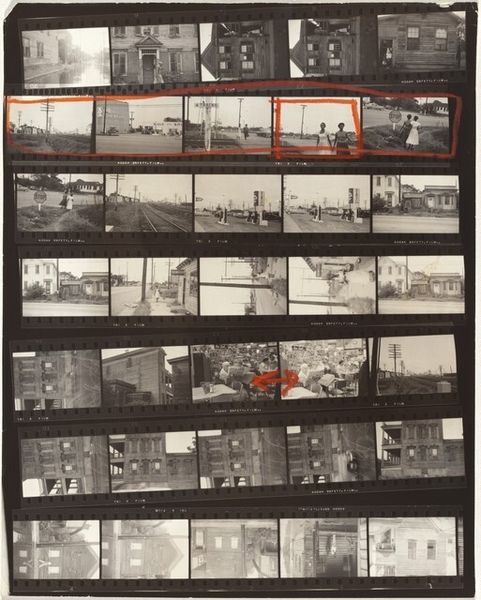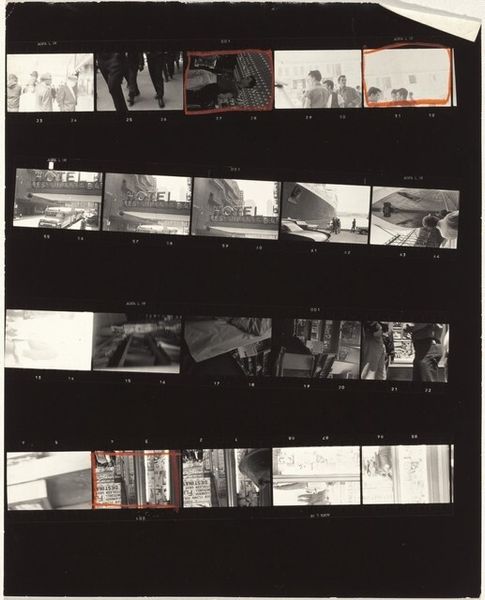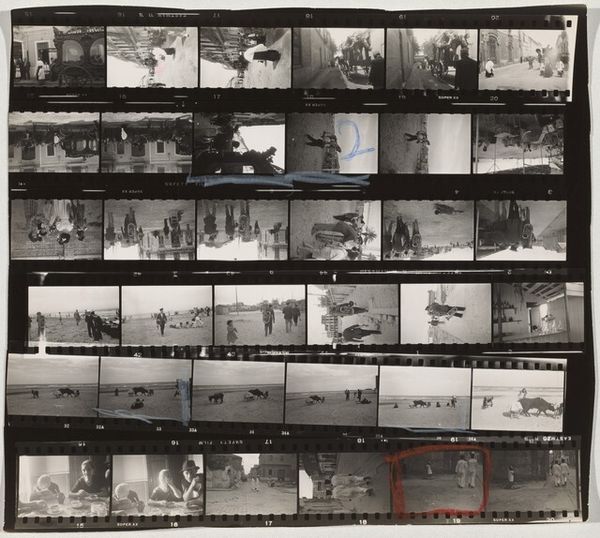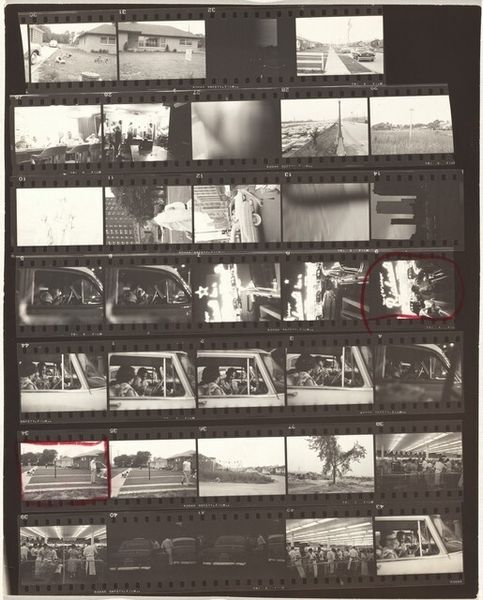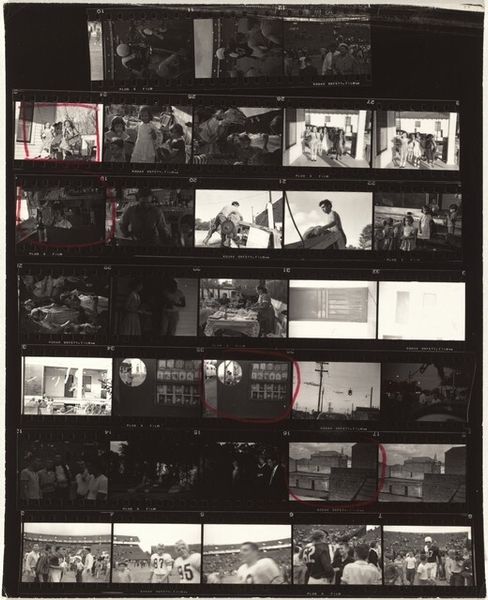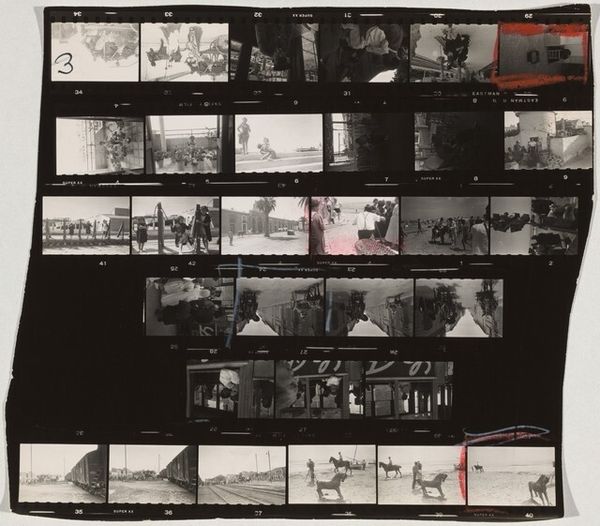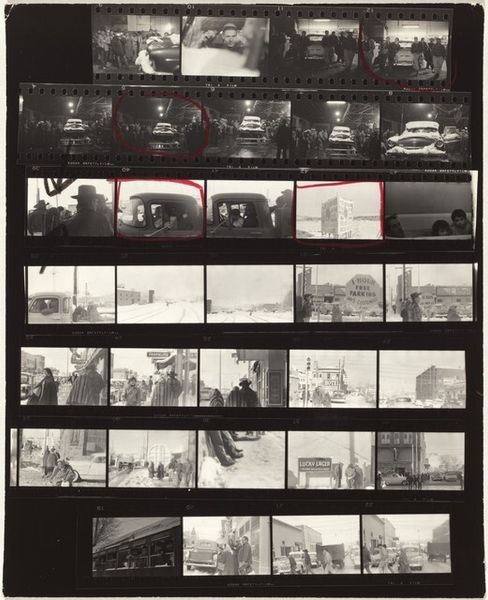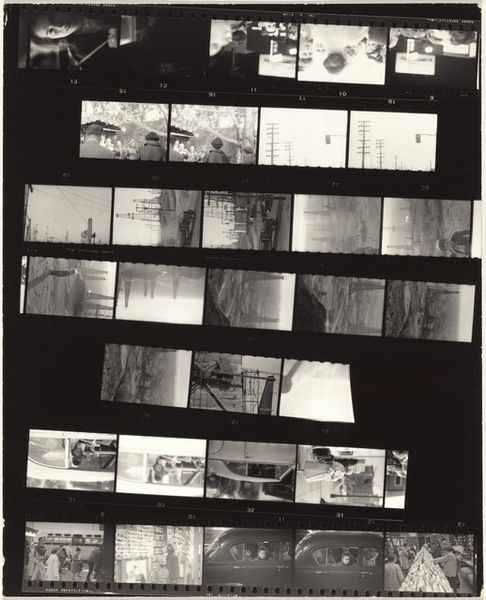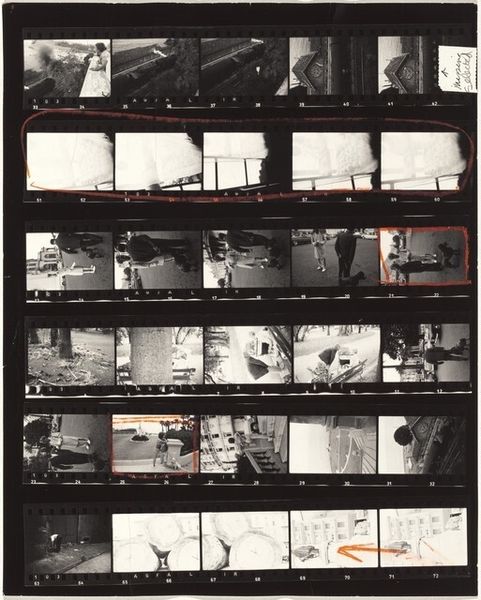
print, photography, gelatin-silver-print
# print
#
landscape
#
street-photography
#
photography
#
gelatin-silver-print
#
pop-art
#
cityscape
#
realism
Dimensions: overall: 25.3 x 20.5 cm (9 15/16 x 8 1/16 in.)
Copyright: National Gallery of Art: CC0 1.0
Editor: Robert Frank's "Guggenheim 533—Los Angeles," a gelatin silver print from 1955-56, presents what looks like a contact sheet, filled with small, almost snapshot-like images. The red markings scattered across it make me feel like I'm seeing the raw, unedited vision of the photographer. What stands out to you when you look at this piece? Curator: The immediate formal characteristic is the grid, which acts as both container and divider. The red markings introduce a layer of subjective editing and disruption, drawing attention to particular frames and lines of sight. What's significant, however, is the interplay between these markings and the pre-existing structural grid. Do you see how the images within the grid themselves contain stark contrasts and juxtapositions of light and dark, further emphasizing the composition's inherent tensions? Editor: Yes, the contrasts create these almost mini-narratives, some clearly landscapes, others with figures. Is Frank suggesting a link, or perhaps a deliberate contrast, between them? Curator: Precisely. The arrangement defies a linear reading, inviting a more associative approach. Consider how the horizontal band in the middle echoes landscape elements – the horizon line – while the frames below shift into more industrial and interior spaces. Does this suggest a dialogue between nature and industry, or a psychological shift in Frank's perspective? Note how the red marks draw our eyes toward these contrasting images. Editor: It’s fascinating how the format, the contact sheet itself, becomes so central to understanding the work. Curator: Indeed. Frank transforms the mundane working document into an expressive piece. The physicality of the filmstrip is integral to the artwork’s message. Do you find that this challenges traditional notions of photographic "perfection" or clarity? Editor: Absolutely! It feels more like a glimpse into the artist’s thought process, a record of his artistic choices. It also raises interesting questions about what constitutes a final "work" of art. Curator: Agreed. And this focus on process is really at the heart of understanding Frank's innovation.
Comments
No comments
Be the first to comment and join the conversation on the ultimate creative platform.
